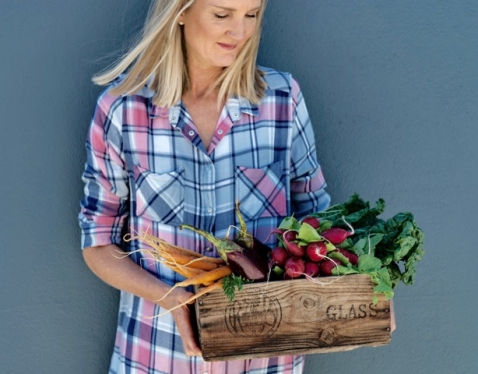Meet Your Microbiome.
March 17, 2018 | by kateb | 0 comments
Meet your Microbiome.
This was the title of the Stool & Faecal Microbial Analysis Masterclass I went to recently with Dr Jason Hawrelak. Not a topic for everyone - but the geeky scientist in me LOVES learning about our bugs and all they do for us. It's a hot topic, so thought I'd share a few highlights.
Jason is at the forefront of researching this topic i.e. gut health. His approach to supporting this incredible mutually beneficial relationship makes sense to me. Interestingly he poses that most microbes have a part to play in our wellbeing, even pathogens such as parasites.
When our microbes are in balance the body is in harmony and our bodily systems function more optimally, naturally supporting our well-being.
For example he cited, 70% of European children carry parasites, yet from all accounts are 'healthy''.
A post on 'Parasites the silent epidemic' here.
Here's a brief recap of the day:
Our microbiome i.e. our human microbes is a vital, and becoming a greatly appreciated, human organ. It weighs 1-2kg and exceeds the liver in the number of biochemical reactions it's involved in!
A brief summary of what they miraculously do;
- Normalise gut motility (bowel movements)
- Modulate our immunity. Protect against allergy development.
- Improve our nutritional status e.g. b vitamins ( stress management), vitamin K (bone health etc), mineral absorption! (sleep, immunity, so much)
- Help protect us against colonisation of pathogens
- Manage our weight
- Control our blood glucose and insulin sensitivity! (longevity)
- Mood management
- Inflammation - the basis of most chronic illness.
There's bound to be more...
fyi I wrote this post with more info. in 2016, 'Is our Microbiome guiding our evolution'?
And in the photo below is a summary of his slide showing many of the diseases associated with a microbial imbalance i.e. Gastrointestinal (GI) Dysbiosis.

He also shared how dysbiosis is diagnosed, 'primarily by a patients' medical and diet history' and with stool analysis.
Throughout the day we also learnt:
- the differences between labs and tests available
- identification of different species of beneficial bacteria and the levels needed to support wellbeing
- species that can inflame or irritate disease and illness when over populated
6 key takeaways that were reinforced:
- We must look after our bugs above all else. When we eat we not only feed our cells, tissues & organs - we are feeding our bugs. The very heart of our well-being.
- Lifestyle factors impact our microbiome. Most importantly movement, stress and environmental toxins.
- Diversity in food equals diversity of our microbiome.
- Over 40 different types of plant food is ideal for feeding a diverse microbiome, preferably freshly picked and from the garden.
- Prebiotics are just as important or possibly more important than probiotics. While probiotics are the live microorganisms, prebiotics are the foods needed to feed the microbiome e.g. raw garlic, raw onions, dandelion greens and under ripe bananas.
- Unless parasites or pathogens are impacting quality of life or are symptomatic, work on repopulating healthy amounts of beneficial bacteria first i.e. upgrade your food and lifestyle choices.
In summary.
Simply put, each one of the above points relates to either food or lifestyle choices.
To be truly healthy there is no escaping the need to be enjoying good food and a health promoting lifestyle. A lifestyle that naturally feeds a healthy microbiome without having to think twice about it.
It's a simple message that unfortunately can be far more complex to make happen or understand as it involves nourishing not only our body / microbiome but our mind and soul.
And as we discovered in A Gentle Cleanse, it IS possible to feel better, clearer and more energised within just a few days.
Contact me at kate@katebarnes.com.au to learn more about how my programs simplify wellbeing and create a healthier lifestyle for you and your family. Or book in a time for us to have a quick chat here. It's free.

